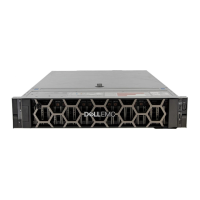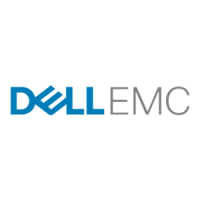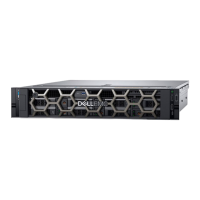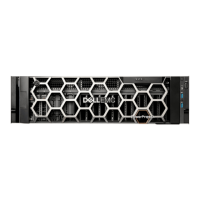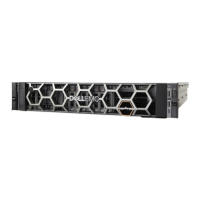SRM enables you to test recovery plans. You can conduct tests using a temporary copy of the replicated data in a way that does not
disrupt ongoing operations at either site. You can conduct tests after a reprotect has been done to conrm that the new protected/
recovery site conguration is valid.
Protected sites and recovery sites
In a typical SRM installation, a protected site provides business-critical data center services. The protected site can be any site where
vCenter supports a critical business need.
The recovery site is an alternative facility to which these services can be migrated. The recovery site can be located thousands of miles
away. The recovery site is usually located in a facility that is unlikely to be aected by environmental, infrastructure, or other disturbances
that aect the protected site.
NOTE: The ME4 Series SRA connects VMware SRM with the storage system’s replication functionality, so you might encounter
dierent terminology that has similar meanings. For example, the VMware user interface and documentation typically refer to
protected and recovery sites. The ME Storage Manager (MESM) user interface and replication documentation refer to primary
and secondary volumes and sites.
SRM requirements
A typical SRM conguration involves two geographically separated sites with TCP/IP connectivity, the protected site and the recovery site.
The protected site is the site that is being replicated to the recovery site for disaster recovery. Each site contains a Dell EMC ME4 Series
storage system, VMware ESX servers, a Virtual Center (vCenter) server, and an SRM server running the SRM.
After you have set up the protected site and the recovery site, and installed the necessary infrastructure for networking between the two
sites, you can install and congure the software. For more information, see Conguring the ME4 Series storage systems.
Conguring the ME4 Series storage systems
If your ME4 Series storage systems are not already congured:
1 Follow the installation instructions in your Dell EMC ME4 Series Storage System Deployment Guide.
2 Ensure that both storage systems have the same host interface conguration (iSCSI or FC or hybrid FC/iSCSI).
Congure replication
NOTE
: Ensure the storage system name, user credentials, and IP addresses for both storage systems are set before conguring
the SRA. The SRA uses the same user credentials for both the local and remote storage system, so if the manage user does have
the same password on both sites, create a new user ID for the SRA with manage on both systems. See Best practices for
additional setup information.
1 Use the ME Storage Manager (MESM) to congure replication software, following the instructions in the replication section of the
Administrator’s Guide, including the following settings for SRA:
• snapshot-count: 3 (or higher)
• snapshot-history: both
• snapshot-retention: high
• queue-policy: queue-latest
• (optional) snapshot-basename: same-as-volume-name
NOTE
: Setting the basename as indicated makes troubleshooting easier because replication snapshots will have the same
name as the base volume with _nnnn appended (indicating the replication generation number).
2 Use the MESM on each system to dene the other system in the replication set as a remote system.
Installing and
conguring the SRA 5

